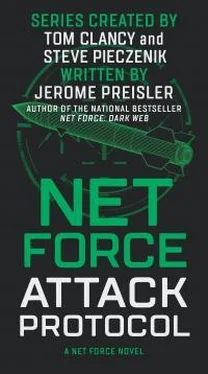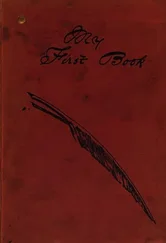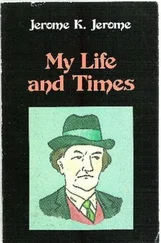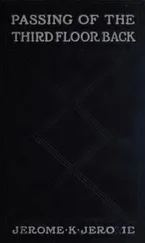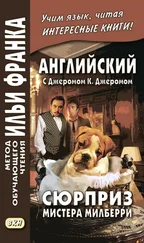The hedgehogs’ adaptive AI was much more advanced, and their electronic senses and weapons systems matched their bigger brains. They could detect and target you at a distance, choose from a dozen ways of taking you out, and lock, load, and fire before you knew what hit you. But they were still machines and had certain machine traits. Like a lack of experience and common sense. It was the biggest hurdle for C5 programmers. They had to input algorithms for robots to perform the simplest tasks, like teaching them the difference between using their claws to pick up straight or round objects, something human babies naturally learned before the age of one.
But a robot wasn’t born and raised in the real world. It didn’t have years to grow and mature and learn through experience. If nobody gave it an algorithm for recognizing a stick as a stick or a ball as a ball and other algorithms for how to grip and manipulate them, a bot ran into problems. That was why robots excelled at repetitive tasks in controlled conditions. Put a robot in an automated factory, where its surroundings were orderly and predictable, and it would run fine. But take it out of those sterile environments, and strange things happened. Like when the robot sentries Mario initially field tested in Aberdeen were deployed to the Nevada ammo dep. He’d spent a month there to work out any crimps with the fleet. Everything went smoothly the first couple of weeks. The robots carried out their tasks the same as they had in trials. Until one of them came across an ordinary desert tortoise on the ground while on patrol.
Its reference database was loaded with animals. Birds, rodents, deer, thousands of different species. Except nobody in Maryland had input data for turtles and tortoises. It was a simple oversight. An omission. There weren’t many of either plodding around the Aberdeen range. So the bot didn’t recognize the tortoise as a tortoise or any other kind of reptile or living creature. For some reason, though, it mistook the tortoise for a rifle. Nobody could figure out why. Maybe something to do with its shape, but that was a stretch. The robot just stood there signaling rifle to its human handlers. But what really threw it into fits was that the rifle didn’t conform to any make or model of rifle in its memory. It was a complete unknown as far as rifles went. An anomaly. And besides that, it was moving across the ground. Which no kind of rifle in its database could do.
The robot was in a logic trap. Mario had observed it remotely for hours. Not that there was much to see. It never budged. For hours. It couldn’t resume its patrol until it worked out the contradiction of the walking gun that could not be a gun. But it didn’t have the necessary tidbit of data. For all its computing power it was paralyzed, stuck in place.
The hedgehog was a close cousin of that sentry bot. It had access to more onboard and cloud-computing power, but the architecture of their artificial intelligence was more similar than different. And Mario recognized that it was now in the same kind of unbreakable logic trap.
It had seen its human prey run into the gap, where there was almost nowhere for them to hide. It hadn’t seen them emerge, but couldn’t pick up their biological readings anywhere inside the gap. And since it likely had no concept of what a freezer was, it was unable to deduce that those heat readings were masked by its insulated walls. The ’hog was programmed to patrol the outer margins of a military base, where freezers weren’t ordinary features of the environment. Probably nobody ever input a reference for horizontal freezers into its memory. A simple omission, understandable even, but it had totally screwed up the ’hog. The freezer was its tortoise in the field. The cause of its obsessive-compulsive behavior.
Since it had identified two humans, and humans were capable of speed and stealth, it wasn’t totally stalled like the Hawthorne sentry. Mario figured its electronic mind allowed that they might have slipped into one of the other closely aligned Quonsets or alleys, so it was ranging up and down the line. Over and over. But it wouldn’t range any farther. It had concluded that if the humans had tried running in the open field behind the huts, or the parking area in front of the huts, or onto the paved road leading across the base, it would have reacquired them as targets. That they still had to be somewhere in or around the line of huts.
Whrrrrrr. Whrrrrr...rrrrrrr...rrrr...
Mario glanced at his watch, listened. The mechanical sounds grew fainter. He brought his eyes up to Laura’s again and held them, a finger to his lips. Fainter and fainter.
Five seconds later, he couldn’t hear them at all. The ’hog had left the gap between Laura’s hut and its neighbor.
Mario inhaled, exhaled, rolled his neck to loosen a knot. Let another ten seconds pass to give the ’hog time to roam up the line.
He slipped off his watch, held it out to Laura.
“Here,” he said. “Take it.”
“I don’t need it.”
“You will.” He lifted her hand from where she was holding it on top of Buttons, placed the watch in it, and closed her fingers around it with his own. “When I jump out of here, wait fifteen seconds. Then make a run for the Jolt. There’s a system that’ll protect you from things. Just drive to the south gate and don’t stop.”
“Mario—”
He looked at her. She looked at him. Their eyes held for the briefest of moments. And suddenly she leaned over and pressed her lips against his, a hard, fierce kiss that was somehow also soft and yielding and almost stole whatever breath remained in his lungs.
“Wow,” he said, when she finally drew away. “Was that the right time?”
“It was for me.” She gave him a strained smile. “Don’t get hurt, Mario.”
He nodded but said nothing.
A second later he reached up with both arms, placed his palms flat on the underside of the freezer door, and pushed, breaking its seal’s magnetic hold, slamming it up and back and open. Frigid air swooped into the chest and instantly displaced the stale warmth inside.
With a final glance at Laura, Mario sprang to his feet and leaped out of the freezer. As he ran off, his footsteps crunching in the snow, she remembered his instructions, looked at the watch in her palm, and began to count down the seconds.
Revived by the cold, Buttons started kicking and clawing and meowing under her coat.
Mario launched from the alley toward the front of Laura’s Quonset, then turned sharply right and sprinted along the row of vacant huts. It was snowing lightly but steadily. Vapor puffed from his nose and mouth. Up ahead of him toward headquarters, and off to his left now at the western perimeter, a pinkish-red glow bled eerily into the sky.
He ran past the second hut, spooked, thinking it looked like the whole compound was ablaze. Then he saw the ’hog outside the fifth hut in line, its sensor arrays turned toward the arched front wall.
“Yo!” he yelled, waving his arms in the air for good measure. “Over here!”
The robot instantly rotated toward him, its .50-caliber machine gun swiveling on its mount so the barrel thrust out in his direction.
Mario hooked into the alley mouth as the gun erupted with fire. Ammunition slapped the ground behind him, hurling billows of talc-white powder up over his footprints in the snow.
The alley was clear. Waste bins empty, no castoff junk scattered around. Probably the civilians who lived here had tidied up before leaving for the holidays.
Mario flattened himself against the side of Quonset Three and peeked around the corner to the right. The hedgehog was on the move, coming in his direction.
“Oye!” he yelled. “Aqui!”
The ’hog fired another salvo, high and tight. Bullets clattered and banged against the hut’s corrugated front wall, hitting it almost level with Mario’s head. He’d bet the robot wouldn’t expend one of its rockets on a single human target. So far, it looked like he was right.
Читать дальше
